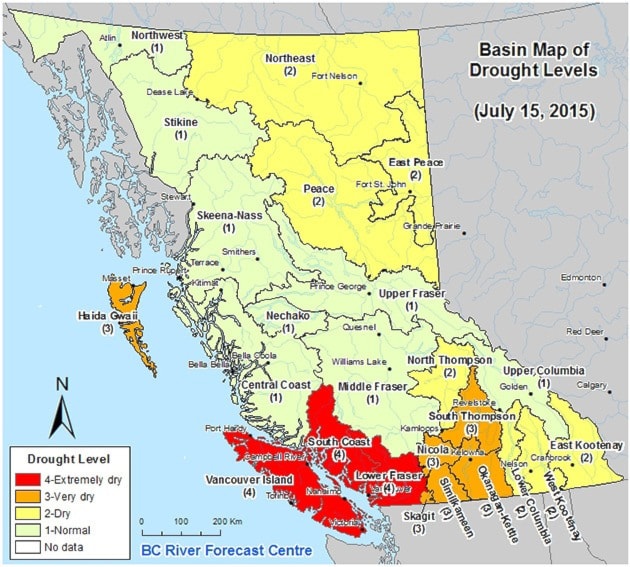Cam Fortems – Kamloops This Week
A small fish kill due to warm water and low flows has been reported in a tributary of the Barriere River as drought conditions continue to worsen throughout B.C.
On a conference call from Victoria last week, provincial officials said most of the province is suffering from remarkably low streams and rivers — conditions typically during a drought in late summer.
The province announced a Level 4 drought rating — the highest — in the south Coast and Lower Fraser regions.
That could lead to orders to drastically curtail or stop withdrawals for some localized water licences.
Closer to home, Kamloops is amid areas of Level 3 in the Nicola, Level 2 in the North Thompson and Level 1 (normal) conditions to the west.
There are no stream closures or major conservation advisories in the Kamloops area, although Leonie Creek, a tributary of the Barriere River, saw a small fish kill from high temperatures and low flows.
Wenda Mason, a manager at the B.C. River Forecast Centre, said much of the province is in the grip of low winter snowpacks combined with a drought and early and continuing high temperatures.
“It’s more typical of late August than mid-July,” she said.
Some regions as close as Hope, are under severe water restrictions.
Graphs of Shuswap Lake show it has declined to at least a 13-year low for this time of year.
Fisheries officials warned earlier of temperatures reaching as high as 19 C on the Fraser River, conditions that imperil spawning salmon.
Murray Ross, who heads the Secwepemc Fisheries Commission, said staff will meet with federal Department of Fisheries and Oceans officials to plan a monitoring and advisory program in this region to determine fish kill and water temperatures.
“We want to make sure we’re out there witnessing this stuff,” he said.
This year is a sub-dominant one for the Adams River salmon run, with several-hundred thousand sockeye forecast to return.
Also at risk is the late-summer sockeye run for Scotch Creek. There is also a salmon run on the North Thompson.
“We’re concerned about all of them,” Ross said.
